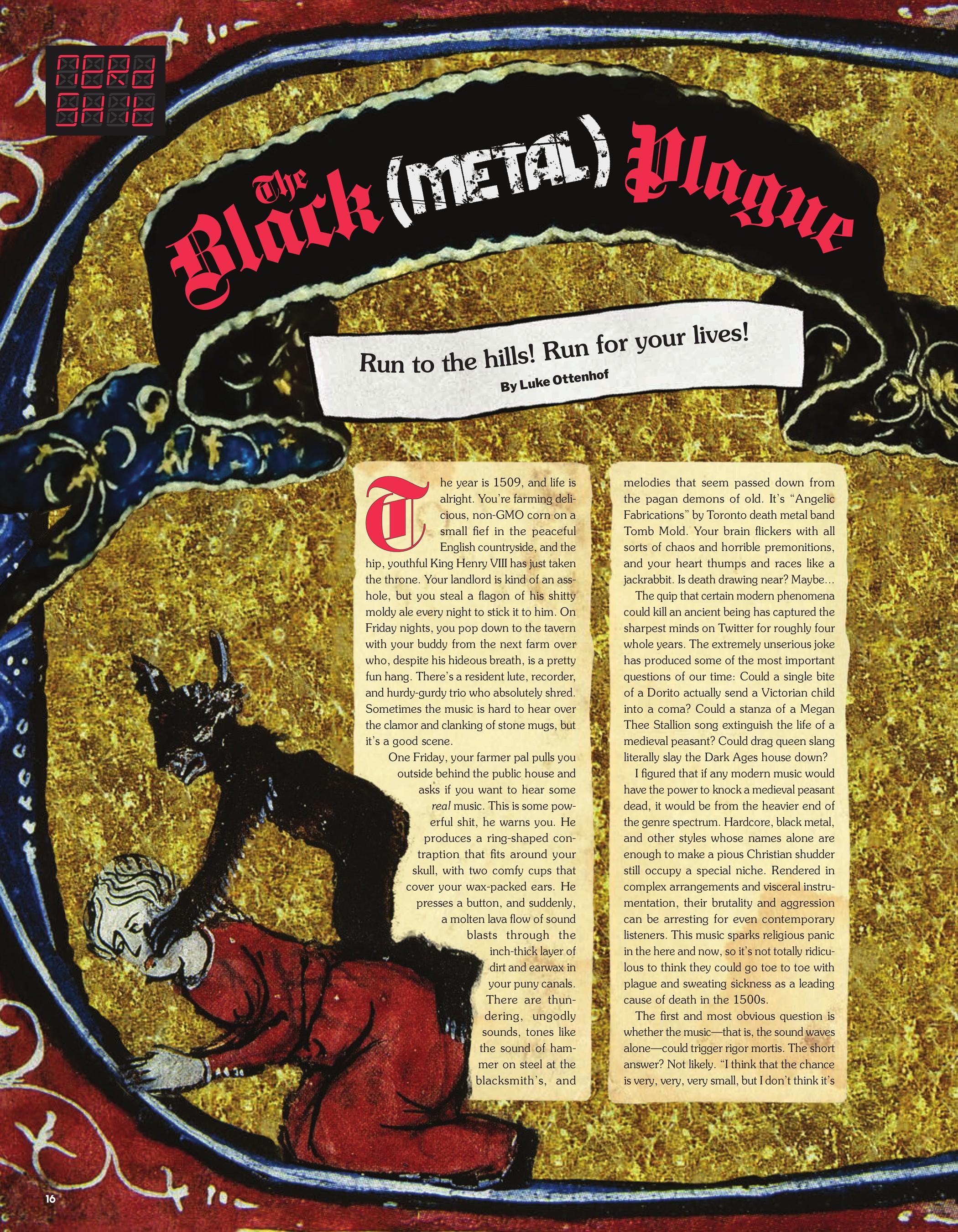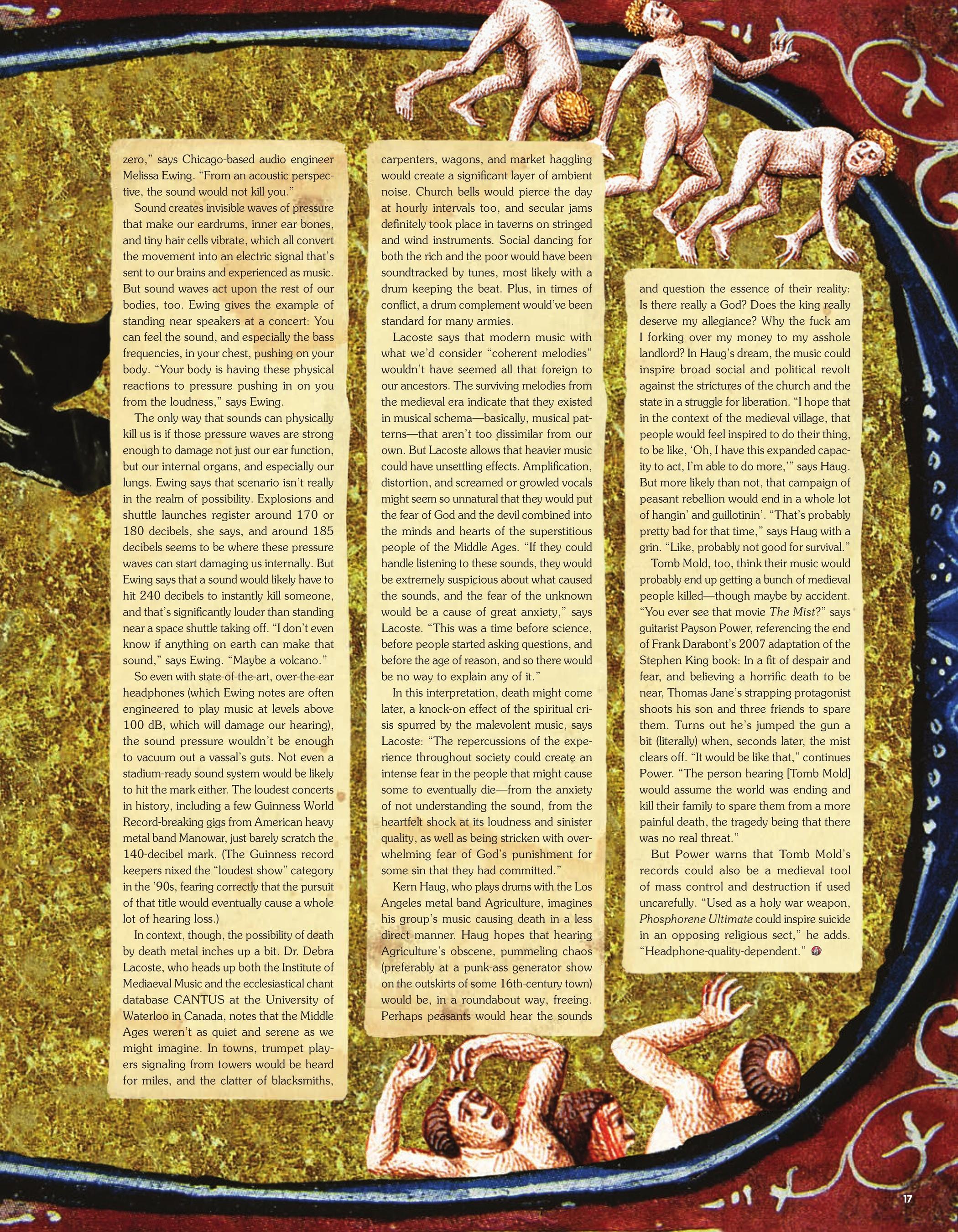NERD SHIT
THE BLACK (METAL) PLAGUE
Run to the hills! Run for your lives!
September 1, 2024


The year is 1509, and life is alright. You’re farming delicious, non-GMO corn on a small fief in the peaceful English countryside, and the hip, youthful King Henry VIII has just taken the throne. Your landlord is kind of an asshole, but you steal a flagon of his shitty moldy ale every night to stick it to him. On Friday nights, you pop down to the tavern with your buddy from the next farm over who, despite his hideous breath, is a pretty fun hang. There’s a resident lute, recorder, and hurdy-gurdy trio who absolutely shred. Sometimes the music is hard to hear over the clamor and clanking of stone mugs, but it’s a good scene.

